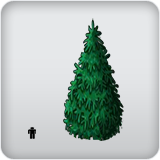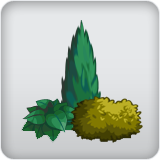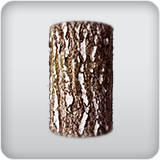Valentine's Day Terrarium Workshop
Register Now

Blue Colorado Spruce
Picea pungens 'var. glauca'
Height: 50 feet
Spread: 20 feet
Sunlight:

Hardiness Zone: 2a
Other Names: Colorado Blue Spruce
Description:
A popular and much-sought-out evergreen accent tree with large stout branches and long, very pointy silvery-blue needles, far more reliable color than the species, a tree of great beauty and color; extremely hardy and rugged, makes an excellent windbreak
Ornamental Features
Blue Colorado Spruce is primarily valued in the landscape for its distinctively pyramidal habit of growth. It has attractive bluish-green evergreen foliage which emerges blue in spring. The needles are highly ornamental and remain bluish-green throughout the winter. The rough gray bark adds an interesting dimension to the landscape.
Landscape Attributes
Blue Colorado Spruce is a dense evergreen tree with a strong central leader and a distinctive and refined pyramidal form. Its average texture blends into the landscape, but can be balanced by one or two finer or coarser trees or shrubs for an effective composition.
This is a high maintenance tree that will require regular care and upkeep. When pruning is necessary, it is recommended to only trim back the new growth of the current season, other than to remove any dieback. Deer don't particularly care for this plant and will usually leave it alone in favor of tastier treats. It has no significant negative characteristics.
Blue Colorado Spruce is recommended for the following landscape applications;
- Accent
- Vertical Accent
- Windbreaks and Shelterbelts
Planting & Growing
Blue Colorado Spruce will grow to be about 50 feet tall at maturity, with a spread of 20 feet. It has a low canopy, and should not be planted underneath power lines. It grows at a slow rate, and under ideal conditions can be expected to live for 80 years or more.
This tree should only be grown in full sunlight. It is very adaptable to both dry and moist growing conditions, but will not tolerate any standing water. It may require supplemental watering during periods of drought or extended heat. It is not particular as to soil type or pH, and is able to handle environmental salt. It is highly tolerant of urban pollution and will even thrive in inner city environments. Consider applying a thick mulch around the root zone in both summer and winter to conserve soil moisture and protect it in exposed locations or colder microclimates. This particular variety is an interspecific hybrid.


 Characteristics
Characteristics


 Applications
Applications




 Features & Attributes
Features & Attributes